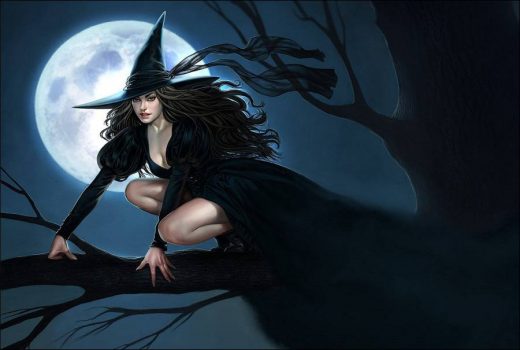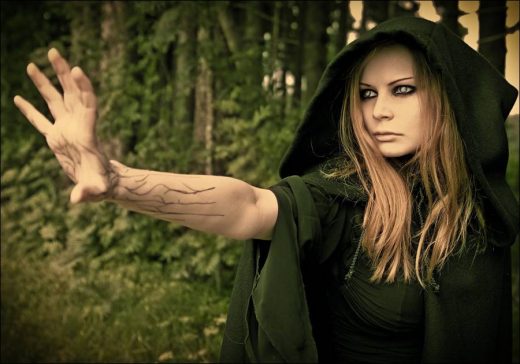“We all have a little bit of witchcraft.” Practical Magic
Our topic is witches, daughters of darkness. They won our hearts with their flying broomsticks, their warty faces, their jovial laughter, their mischief and their boiling cauldrons. They have always existed in history, they have always been equated with bad or ugly women. This was a meaning that men’s history ascribed to them. In fact, the witch was the male historical counterpart of the powerful and healing woman. From Lilith to the first women collecting and observing nature, from the first scientist Hypatia to the superhero Scarlet Witch and today’s women…
In many religions and mythologies, witchcraft is referred to as a person or even a woman who serves evil purposes through magic and is believed to have supernatural powers. It spoils milk, prevents milk from turning into butter, causes people to leave the house dead, throws mud on the laundry… (In fact, it’s more like mud is thrown at women who are engaged in healing.)
The image of a witch has turned into an old woman with a pointed head and a broom in popular culture. Nowadays, since every woman is a bit of a witch, it symbolizes women with a strong stance. A kind of religious understanding that is in harmony with nature. So witchcraft isn’t such a bad thing these days. These women are the subject of this article. There is a lot of uncanny information floating around about them. So I chose the following to have fun and be fascinated while having fun; I didn’t want to dive too deep to find pearls and blended familiar materials with unknown words. I hope the witches in this article will sweep away your bad energies with their cheerful broomsticks.
A pinch of historical facts, a pinch of interesting information, a bit of the author’s choice, a bit of fun, a lot of humor, the shadow of the minaret, the frog’s legs, a series of oddities… Here is magical information about witches!
1- First of all, let’s look at where the word witch comes from. The Old English word “wicca” is actually the ancestor of the word witch, which means witch. (Did I say mother?) Back then, wicca for male witch, wizard, astrologer, healer; The word wicce was used for the female one. The word wicca comes from the ancient “wic” meaning willow branch, a branch that can be bent without breaking. It means a person who can bend the perception of reality by using magical powers. The word witch is Persian and female whose food is evil.
2- In many folk tales, it is believed that witches can turn into animals. Black cat, owl, wolf and bat are some of them. Owls were witches who took the form of birds, bats carried souls, cats were protectors. Brooms are the biggest helpers of witches. They sweep away bad energy and protect the fire and hearth. Witches have their own concept of sabbath. At night they ride their broomsticks or creme and fly and gather in the forest. Here they dance and celebrate for the devil. Sometimes they go even further and have gangbangs and nasty feasts. They even kiss the devil’s ass!
3- How can we protect ourselves from witches? Witches come to the light. So we can dim the lights in our homes a little bit. A witch can make herself small enough to pass through a keyhole. At night, it is necessary to hang a sieve on the door handle so that the witch encounters an obstacle and cannot enter. We should always sleep with a silver knife under our pillow in case the witches manage to break into the house. We can also sprinkle mustard seeds around our bed. Another effective way is to hang a horseshoe above the outside door. In order to protect ourselves individually, we must carry rattlesnake skin, a bottle filled with log water, or money in our shoes.
4- A little bit of history. The first known witch trials and executions in history are thought to have taken place in 1428 in Valais, in what is today southern Switzerland. The accusations at that time were as follows: These women may have eaten their own children! The witch craze broke out all over Europe between 1500 and 1660. And tragically many innocent people were executed. This number is claimed to be around 80,000. The country that executed the most witches is Germany, and the country that executed the least is Ireland. (Should we appreciate that?!)
Some more history:
5- The Salem witch trials, which have become a legend, should be examined in a separate article. Undoubtedly the most tragic of the witch trials took place in Salem in the late 1600s. Beginning in 1692, it continued with district court hearings led by magistrates for a group of people accused of witchcraft. Although not many people were wanted at the trials, they were charged and more than 150 people were arrested and jailed.
This period had many economic, religious, political and moral reasons. One of the most important reasons was the unshakable patriarchal beliefs of that period. That is, a woman must obey a man, a woman can easily follow the devil because of her nature, and the creature called woman is lustful. Also, since Salem was a small town, one’s opinion could easily become the opinion of the general public or even the truth. So there was a brutal mass hysteria. Fortunately, in 1693 the mass hysteria subsided and public opinion stopped supporting the lawsuits. He gained new sanity.
6- Maybe you can be a witch too. If you could not pass these tests during the trial of witches, you were declared a witch and burned at the stake.
Visits: 95





